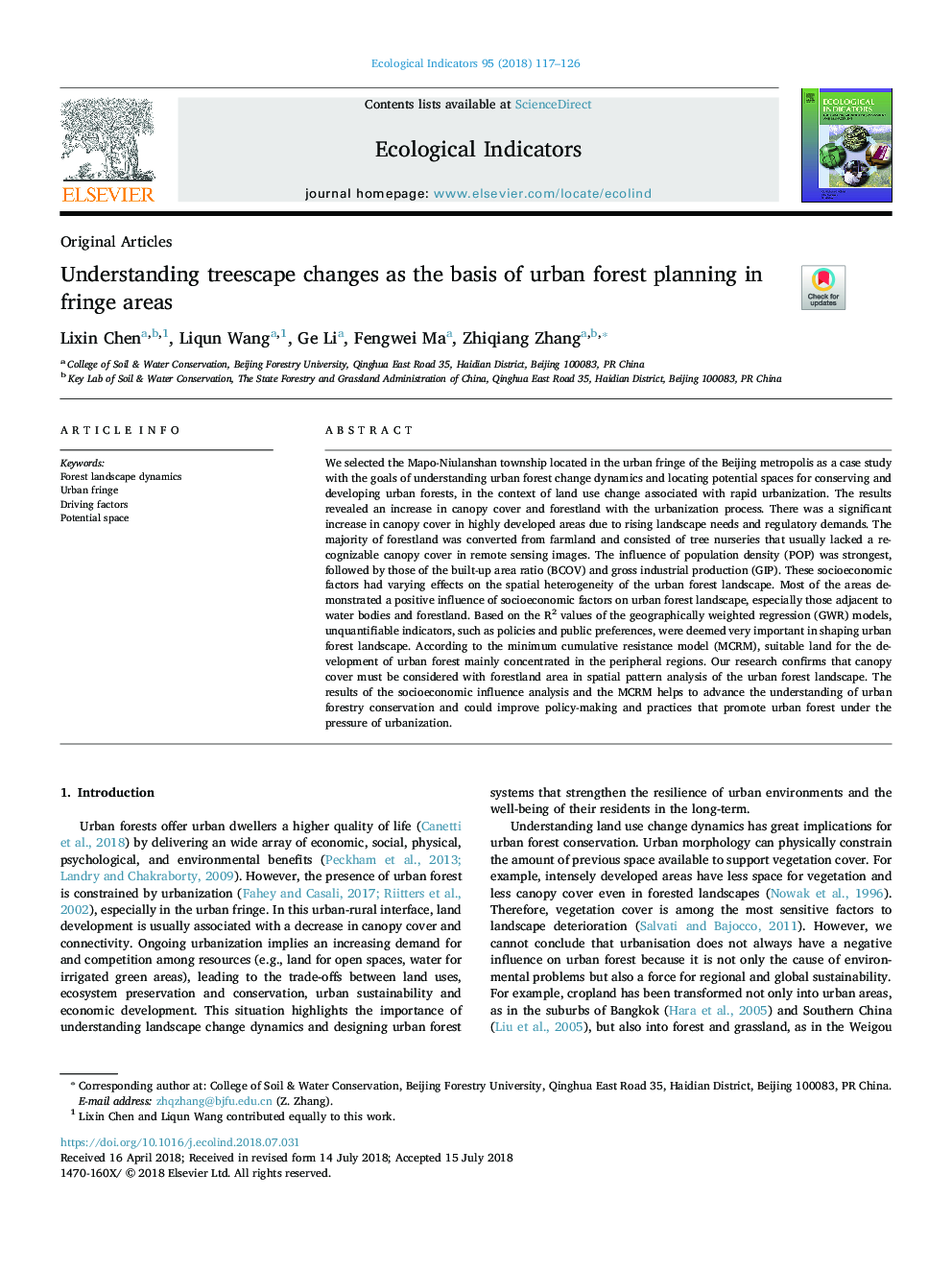| کد مقاله | کد نشریه | سال انتشار | مقاله انگلیسی | نسخه تمام متن |
|---|---|---|---|---|
| 8844925 | 1617107 | 2018 | 10 صفحه PDF | دانلود رایگان |
عنوان انگلیسی مقاله ISI
Understanding treescape changes as the basis of urban forest planning in fringe areas
ترجمه فارسی عنوان
درک تغییرات درخت درختی به عنوان اساس برنامه ریزی جنگل های شهری در مناطق حاشیه ای
دانلود مقاله + سفارش ترجمه
دانلود مقاله ISI انگلیسی
رایگان برای ایرانیان
کلمات کلیدی
دینامیک چشم انداز جنگل، حاشیه شهری، عوامل رانندگی، فضای بالقوه،
موضوعات مرتبط
علوم زیستی و بیوفناوری
علوم کشاورزی و بیولوژیک
بوم شناسی، تکامل، رفتار و سامانه شناسی
چکیده انگلیسی
We selected the Mapo-Niulanshan township located in the urban fringe of the Beijing metropolis as a case study with the goals of understanding urban forest change dynamics and locating potential spaces for conserving and developing urban forests, in the context of land use change associated with rapid urbanization. The results revealed an increase in canopy cover and forestland with the urbanization process. There was a significant increase in canopy cover in highly developed areas due to rising landscape needs and regulatory demands. The majority of forestland was converted from farmland and consisted of tree nurseries that usually lacked a recognizable canopy cover in remote sensing images. The influence of population density (POP) was strongest, followed by those of the built-up area ratio (BCOV) and gross industrial production (GIP). These socioeconomic factors had varying effects on the spatial heterogeneity of the urban forest landscape. Most of the areas demonstrated a positive influence of socioeconomic factors on urban forest landscape, especially those adjacent to water bodies and forestland. Based on the R2 values of the geographically weighted regression (GWR) models, unquantifiable indicators, such as policies and public preferences, were deemed very important in shaping urban forest landscape. According to the minimum cumulative resistance model (MCRM), suitable land for the development of urban forest mainly concentrated in the peripheral regions. Our research confirms that canopy cover must be considered with forestland area in spatial pattern analysis of the urban forest landscape. The results of the socioeconomic influence analysis and the MCRM helps to advance the understanding of urban forestry conservation and could improve policy-making and practices that promote urban forest under the pressure of urbanization.
ناشر
Database: Elsevier - ScienceDirect (ساینس دایرکت)
Journal: Ecological Indicators - Volume 95, Part 1, December 2018, Pages 117-126
Journal: Ecological Indicators - Volume 95, Part 1, December 2018, Pages 117-126
نویسندگان
Lixin Chen, Liqun Wang, Ge Li, Fengwei Ma, Zhiqiang Zhang,
